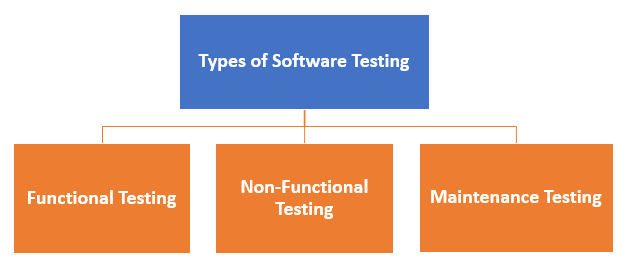What is Software Testing?

What is Software Testing?
Software Testing is a method to check whether the actual software product matches expected requirements and to ensure that software product is Defect free. It involves execution of software/system components using manual or automated tools to evaluate one or more properties of interest. The purpose of software testing is to identify errors, gaps or missing requirements in contrast to actual requirements.
Some prefer saying Software testing definition as a White Box and Black Box Testing. In simple terms, Software Testing means the Verification of Application Under Test (AUT). This Software Testing course introduces testing software to the audience and justifies the importance of software testing. As per ANSI/IEEE 1059, Testing in Software Engineering is a process of evaluating a software product to find whether the current software product meets the required conditions or not.
Why Software Testing is Important?
Software Testing is important because if there are any bugs or errors in the software, it can be identified early and can be solved before delivery of the software product. Properly tested software product ensures reliability, security and high performance which further results in time saving, cost effectiveness and customer satisfaction.
Software Failures That Made Global Headlines
The following real-world examples demonstrate the consequences of inadequate software testing
1. China Airlines Airbus A300 Crash (April 26, 1994)
- Impact: 264 lives lost
- Significance: Demonstrates the ultimate consequence of software failure – human casualties. This tragedy shows that software testing isn’t just about business metrics but can be a matter of life and death, particularly in safety-critical systems like aviation.
- Lesson: Emphasizes the critical importance of rigorous testing in systems where human lives depend on software reliability.
2. Military Satellite Launch Failure (April 1999)
- Impact: $1.2 billion loss – the costliest software-related accident in history
- Significance: Shows the massive financial implications of inadequate testing. This single incident cost more than most companies’ entire annual revenues, making it relatable for business stakeholders who need to understand testing ROI.
- Lesson: Even with high-stakes projects and presumably extensive testing protocols, critical bugs can slip through, highlighting the need for comprehensive testing strategies.
3. Bloomberg Terminal Crash (April 2015)
- Impact: 300,000+ traders affected, £3 billion government debt sale postponed
- Significance: Demonstrates widespread systemic impact on modern financial infrastructure. It shows how software failures can cascade through interconnected systems, affecting entire markets and government operations.
- Lesson: In our interconnected digital economy, a single software failure can have ripple effects across multiple sectors, emphasizing the need for robust testing in critical infrastructure.
Click here if the video is not accessible
What are the Benefits of Software Testing?
Here are the benefits of using software testing:
- Cost-Effective: It is one of the important advantages of software testing. Testing any IT project on time helps you to save your money for the long term. In case if the bugs caught in the earlier stage of software testing, it costs less to fix.
- Security: It is the most vulnerable and sensitive benefit of software testing. People are looking for trusted products. It helps in removing risks and problems earlier.
- Product quality: It is an essential requirement of any software product. Testing ensures a quality product is delivered to customers.
- Customer Satisfaction: The main aim of any product is to give satisfaction to their customers. UI/UX Testing ensures the best user experience.
Types of Software Testing
Software Testing is the process of evaluating and verifying that a software application or system functions correctly, meets specified requirements, and is free from defects.
Software testing is typically classified into three main categories:

1. Functional Testing
Functional testing verifies that each function of the software application operates in conformance with the requirement specification. It focuses on testing the functionality of the system by providing appropriate input and verifying the output.
Types of Functional Testing:
- Unit Testing – Tests individual components in isolation
- Integration Testing – Tests interaction between integrated modules
- System Testing – Tests complete integrated system end-to-end
- User Acceptance Testing (UAT) – Final validation by end users
- Smoke Testing – Basic functionality check after deployment
- Sanity Testing – Narrow regression testing focused on specific functionality
- API Testing – Tests application programming interfaces
- Database Testing – Validates data operations and integrity
2. Non-Functional Testing (Performance Testing)
Non-functional testing evaluates the non-functional aspects of a software application such as performance, usability, reliability, and scalability. It tests “how” the system performs rather than “what” it performs.
Types of Non-Functional Testing:
- Performance Testing – Evaluates speed and responsiveness
- Load Testing – Tests normal expected load conditions
- Stress Testing – Tests beyond normal capacity limits
- Volume Testing – Tests with large amounts of data
- Security Testing – Checks for vulnerabilities and data protection
- Usability Testing – Assesses user experience and ease of use
- Compatibility Testing – Tests across different environments
- Scalability Testing – Tests system’s ability to scale up/down
3. Maintenance Testing
Maintenance testing is performed on an existing operational system to ensure that modifications, updates, or migrations do not introduce new defects or negatively impact existing functionality.
Types of Maintenance Testing:
- Regression Testing – Ensures existing features work after code changes
- Maintenance Testing – Tests after system modifications or updates
- Impact Analysis Testing – Identifies areas affected by changes
- Configuration Testing – Tests different hardware/software configurations
This is not the complete list as there are more than 150 types of testing types and still adding. Also, note that not all testing types are applicable to all projects but depend on the nature & scope of the project. To explore a variety of testing tools and find the ones that suit your project requirements, visit this list of testing tools.
Different Levels of Software Testing
Software testing is performed at different levels during the development lifecycle, each with specific objectives and scope.
- Unit Testing: This software testing basic approach is followed by the programmer to test the unit of the program. It helps developers to know whether the individual unit of the code is working properly or not.
- Integration Testing: It focuses on the construction and design of the software. You need to see that the integrated units are working without errors or not.
- System Testing: In this method, your software is compiled as a whole and then tested as a whole. This testing strategy checks the functionality, security, portability, amongst others.
Summary of Software Testing Basics
- Software testing is defined as an activity to check whether the actual results match the expected results and to ensure that the software system is Defect free.
- Testing is important because software bugs could be expensive or even dangerous.
- The important reasons for using software testing are: cost-effective, security, product quality, and customer satisfaction.
- Typically Testing is classified into three categories functional testing, non-functional testing or performance testing, and maintenance.
- The important strategies in software engineering are: unit testing, integration testing, validation testing, and system testing.
